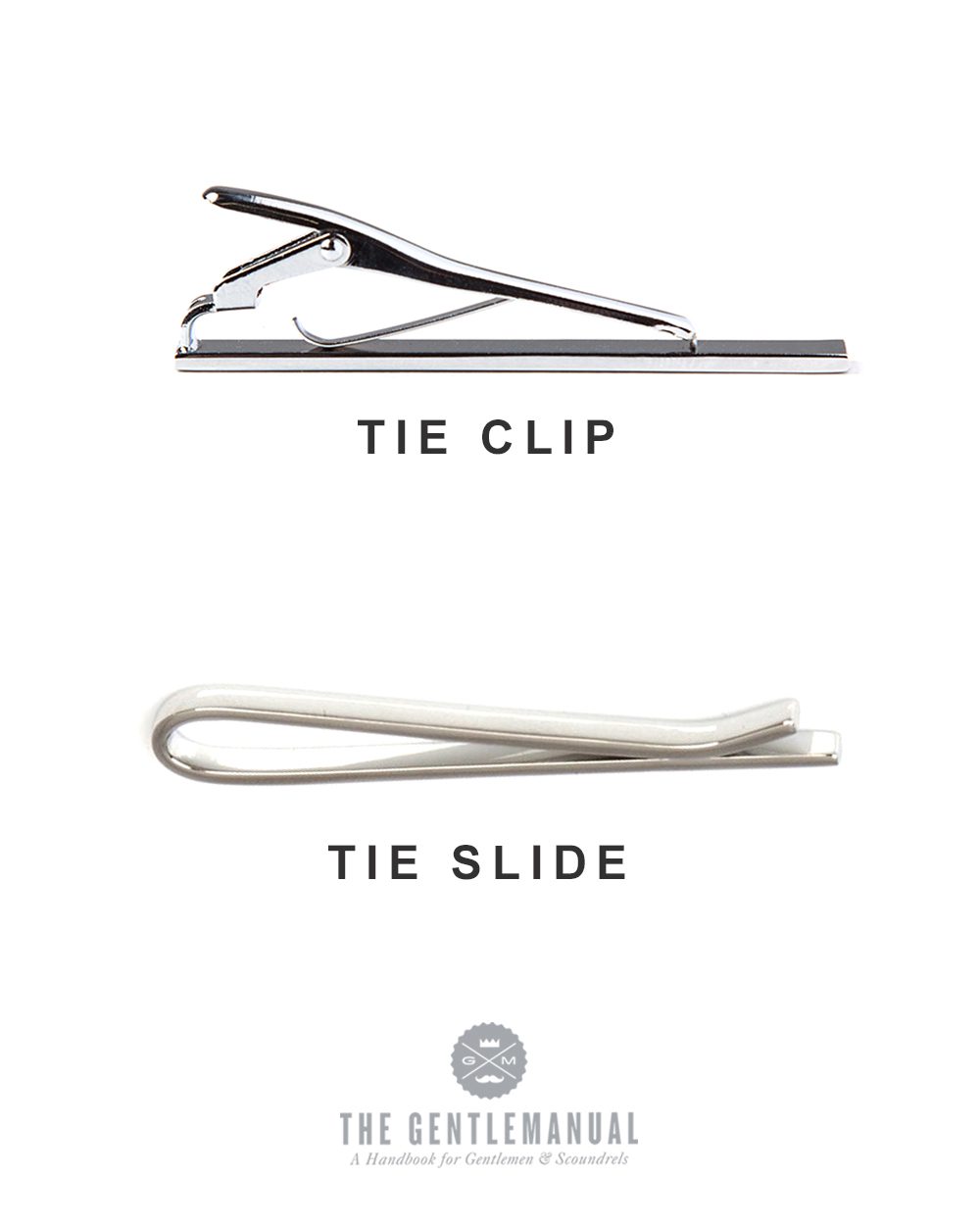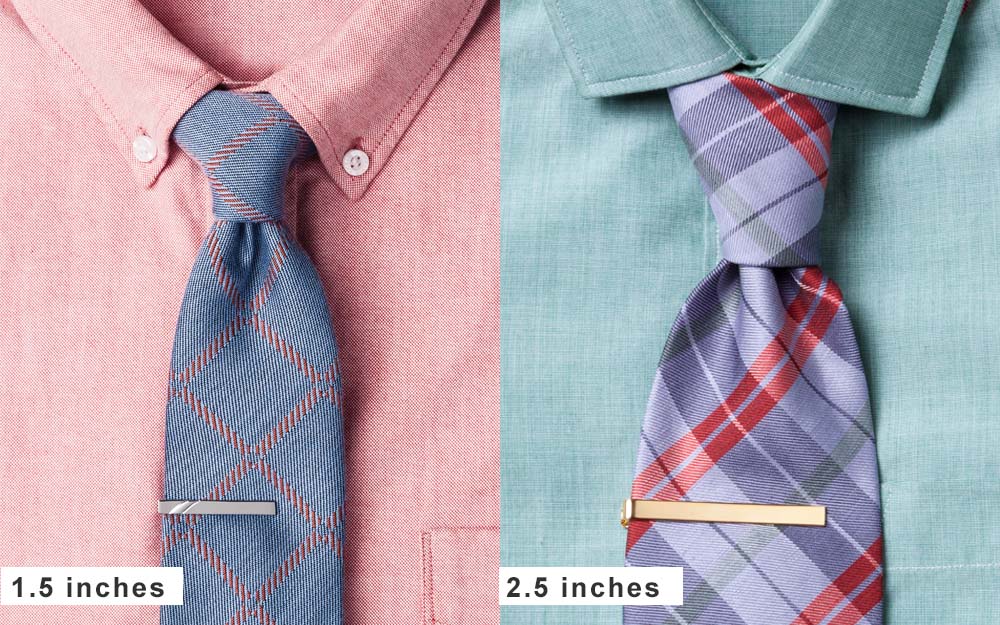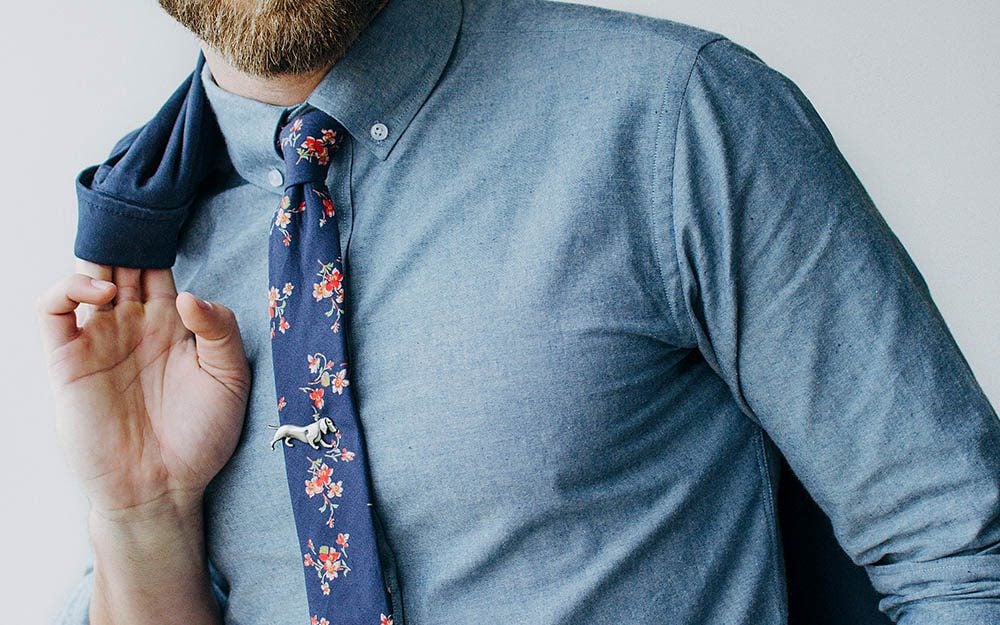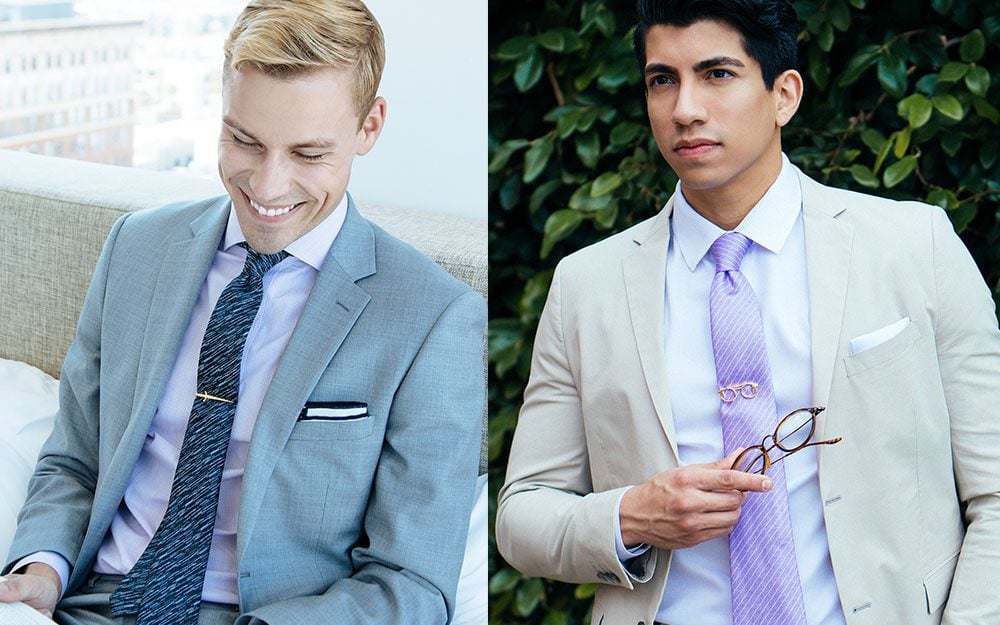Everything You Need to Know About Tie Bars
How to pair them, where to
clip it, and more










Written by Jacob Sigala
Gentlemen, the tie bar, tie
clip, tie clasp, tie slide, cha-cha-slide–call it what you will (okay, maybe
not the last one)–is your rite to impeccable class. Have you ever wanted to
look neurotically stylish? Then pay attention to detail.
What Are Tie Bars?

With the introduction of a
little metal pin during the Victorian Era, ties could no longer fly with the
wind, nor could they ruin soup dinners. The issue with said tie pins, however,
was that they’d puncture neckwear, leaving holes. So in the 1900s, the
spring-loaded tie bar was born as a solution, and soon after, a more simple
slide version of this tie bar came into existence.
Much like cufflinks, tie bars
speak volumes about one’s personality. Sure, they are small, but remember what
Yoda said? Size matters not, gentlemen. At least, not in this circumstance.
Types of Tie Bars: Tie Clips
vs. Tie Slides
Both tie clips and tie slides
look essentially the same from the front.

The tie clip operates on a
hinge and clasps onto your tie to hold it in place. The slide bar, on the other
hand, works like its namesake implies–simply push and slide it into place.
Either one will get the job done, but we prefer the clip versions, as slides
can shift in position throughout the day.
How to Wear a Tie Bar
Tie bars hold your tie in
place by binding your neckwear to the front placket of your shirt. As for tie
bar placement, it should sit right over your sternum, between the third and
fourth buttons.

Tie Bar Size

Tie bar width ranges from half
an inch to three inches. Generally, skinny ties will be worn with tie bars
between 1 to 1.5 inches across, while wider ties work better with tie clips
greater than 1.5 inches across. Work it out visually–if the tie bar extends
further than the tie’s width, something is wrong. A good place for the tie bar
to end is around 3/4 of the way across your tie.
Tie Bar Placement

There is a general area
between the third and fourth button on your dress shirt that we dubbed “the
sweet spot,” but if you want to get a little more specific, the sweetest spot
is right below the third button. This is where the bar can truly shine in all
its glory while retaining its impeccable functionality. If you position it too
high, you’re basically choking your tie and losing your bar’s functionality (it
will no longer work well at holding your tie in place). Too low, and you are
getting into a weird asymmetric zone. Stick to the sweet spot; you’ll know when
you’ve found it.
Tie Bar Materials
There was a point in the tie
bar’s history when colors were limited to gold and silver.
Glossy silver works well with
practically any tie combination. Gold, on the other hand, will stand out.
That’s why a gold tie bar pairs best against darker hues or a solid colored
tie. It’s a trickier feat to match gold with bright prints without clashing,
but that’s not to say it can’t be done.
Today, tie bars come in all
shades of metal: white gold, silver, rose gold, yellow gold, matte black, and
even colorful enamel.

Do proceed with caution,
though. As colors and styles get bolder, their ability to thoughtlessly
complement decreases. If you want to add showstopper ornamentation to your
outfit, contemplate the look. There’s a time and a place for golden Weiner dog
tie bars. Figure out how to pair it, and your look will be epic, and adorable
to women.

If you’re wearing other
accessories, be mindful of how all the colors go together. If you want to play
it safe, match your tie bar and cufflinks. If you’re feeling bold, go forth and
pair how you will. Kudos! Let us know what worked for you.
Matching Tie Bars and Ties
What about the type of tie?
Frankly, tie bars can go with any tie–skinny ties, wide ties, knit ties,
novelty ties–you name it. All we ask, for the sake of the tie, is that you mind
the tie’s construction. For example, if it’s a knit tie, we recommend using a
tie slide rather than a clamp, as the clamp’s teeth may damage the tie.

Adding Layers
What happens when I wear a
jacket or a cardigan? Don’t worry. It’s all good. The two primary functions of
the bar are to hold the tie in place and add some extra style. Just keep the
position of the tie bar in mind. If you were thinking of wearing your tie bar
close to the fourth button, you might want to move it up toward the second or
third button so that it will still be visible if you wear another layer
(especially if you’re buttoning it).
Tie Bar Alternatives
There are plenty of
aesthetically pleasing alternatives, but these options do puncture the tie.
The tie tac, tie tack, or tie
pin has the same function as a tie bar. It pins to the tie and has a chain that
attaches to the shirt button, so the tie is held in place by a chain. All of
these items achieve the same end goal, so it comes down to preference, and
whether you’re okay with a little hole in your neckwear.
That’s it, folks. Almost all
the nifty tie bars featured in this article can be found on our website. Feel
free to take a gander: Tie Bars and Tie Clips
Jacob Sigala
SOURCE: THE GENTLEMANUAL
SOURCE: THE GENTLEMANUAL
Comments
Post a Comment